Would a new “Codex Animalia Commission” allow the World Organization for Animal Health to focus on wider non-trade issues?
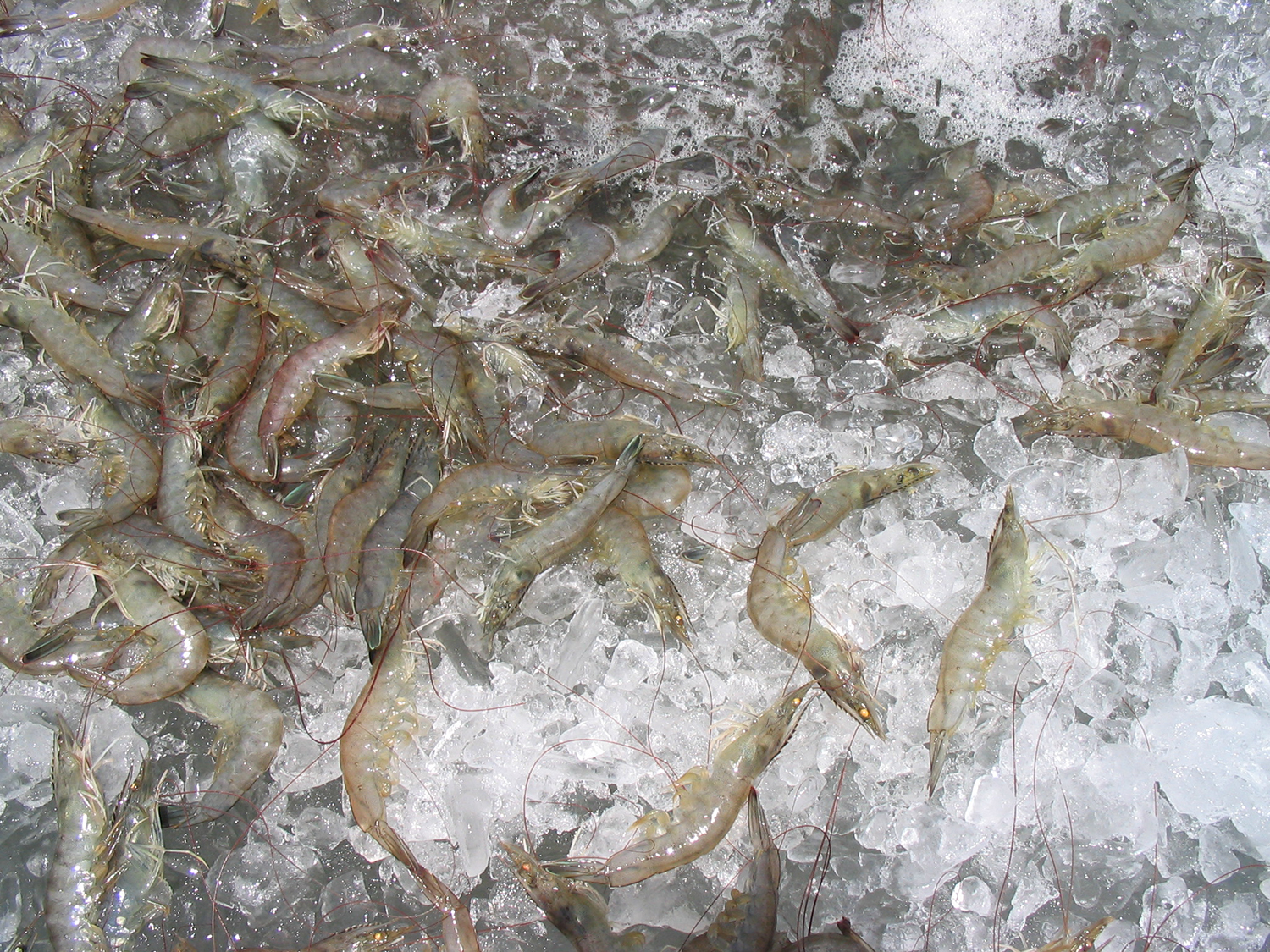
The members of the World Trade Organization (WTO) have agreed to cooperate under the terms of the “Agreement on the application of sanitary and phytosanitary measures” (referred to here as the “SPS Agreement”).
The SPS Agreement allows adoption and enforcement of measures “necessary to protect human, animal or plant life or health” in a manner that does not “constitute arbitrary or unjustifiable discrimination between members where the same conditions prevail or a disguised restriction on international trade.”
The administration of the SPS Agreement is the responsibility of the WTO Committee on Sanitary and Phytosanitary Measures (CSPM). CSPM maintains close contact with selected expert organizations called International Reference Points (IRPs). These are the Codex Alimentarius Commission (CAC) for human safety, the International Office of Epizootics (OIE) for animal safety and the Secretariat of the International Plant Protection Convention for plant safety. This article focuses on the OIE, which is now called the World Organization for Animal Health (WOAH).
Both CAC and WOAH pre-date the SPS Agreement. CAC was established in 1961 by the Food and Agriculture Organization (FAO), joined by the World Health Organization (WHO) in 1963. Both FAO and WHO are United Nations bodies. WOAH (then the OIE) was founded in 1924 as an international professional association with voting national delegates, most of whom were veterinarians. Unlike FAO and WHO, the WOAH is not in the United Nations system, although it is an intergovernmental organization.
The WOAH alone was appointed as the IRP for safety regarding control over the spread of animal diseases and zoonoses by trade. WOAH recommendations are given in the Terrestrial Animal Health Code and the Aquatic Animal Health Code. These codes do not deal with human food safety issues (except for zoonotic diseases – infectious diseases of humans caused by a pathogen that can jump from a non-human, usually a vertebrate, to a human and vice versa), since CAC is the WTO IRP for human food safety. Nor do the WOAH codes confine their recommendations to trade issues, as CAC does.
The WOAH is tasked with much wider responsibilities, including husbandry practices and general animal health issues that are important to maintain optimal animal health. Of course, these have an impact on the ability to produce high-quality products for trade in an efficient, stable and humane manner, but such issues are not directly related to determining the safety of traded commodities.
The scope of economically important animals that are traded is well beyond the scope covered by training offered in veterinary schools. For example, trade includes a wide spectrum of non-vertebrate animals of economic importance (e.g., crustaceans, insects, mollusks) that are not usually studied by veterinarians. This poses considerable challenges due to limited knowledge of the ecology and epidemiology of aquaculture species and their pathogens. Many countries also have limited capacity or resources to manage effective monitoring and surveillance programs for diseases of aquaculture species.
In our opinion, the WTO’s appointment of the WOAH as the IRP for animal health has led to an unfortunate situation in which WOAH recommendations are resulting in increasing trade problems. We believe that this situation can be rectified by a collective decision from WTO member countries for the WTO Committee on Sanitary and Phytosanitary Measures (CSPM) to establish a new IRP along the same lines as the CAC, perhaps called the “Codex Animalia Commission” (CANC) comprised of representatives from FAO and WOAH Creation of the CANC would facilitate expansion in the scope of expertise available to cover the wide and growing range of vertebrate and invertebrate animals and their products that are traded, but not covered by veterinary training.
Like CAC, CANC would be dedicated solely to safe trade in animals and their products, allowing WOAH to focus on wider, non-trade, issues such as global improvement of general animal health and welfare and other issues relevant to its members. It would not alter the structure and management of WOAH with respect to National Delegates and their role in the global “One Health” goal. The WOAH position with respect to safety of traded products for the animals of their specialty would be communicated by their representatives in the newly formed CAC.
Opinion: OIE, the World Organization for Animal Health, needs seafood industry’s input
Current problems with trade in animal products
Changes in the WOAH Aquatic Animal Health Code have created a situation where countries are reluctant (or even avoid) accurately reporting their health status to WOAH for new and newly emerging diseases. This is because of the risk of trade restrictions being imposed in a knee-jerk reaction by trading partners, even for exported, dead aquaculture products. This is often primarily based solely on positive test results using PCR detection methods. Similar problems with PCR sometimes occur also with exported aquaculture feeds even when processing methods have been shown to kill or inactivate the pathogen. Upon occasion, countries having new disease problems seek confidential advice from international experts or organizations but choose not to inform WOAH. Although this silence provides temporary avoidance of negative trade consequences for national industries, the lack of accurate information on new and newly emerging diseases greatly increases the risk of their spread via live aquatic animals translocated for aquaculture. As a result, the global industry is placed at risk and WOAH faces loss of credibility in its ability to prevent disease spread due to lack of reliable information.
The problems we see with trade in dead animal products have arisen from policies evident in the current WOAH Aquatic Animal Health Code (AAHC) Chapter 5.4 entitled “Criteria to Assess the Safety of Aquatic Animal Commodities” and specifically to Article 5.4.2 [entitled “Criteria to assess the safety of aquatic animal products imported (or transited) for retail trade for human consumption regardless of the disease X status of the exporting country, zone or compartment”]. Prior to 2008, these products were described as “aquatic animal products prepared and packaged for direct retail trade for human consumption.”
Up to 2008 in the AAHC, the dead animal products whole eviscerated fish and fish fillets, chilled or frozen and de-headed, de-veined shrimp tails chilled or frozen were recommended for importation “without measures regardless of the disease X status of the exporting country, zone or compartment.” For some unknown reason beginning in 2008, and against objections from some member countries, the WOAH position on commodities began to change.
The first paragraph of model Article 5.4.2 of the current AAHC reads:
“Point 1 of Article X.X.11. (mollusk disease-specific chapters), Article X.X.12. (amphibian, crustacean and fish disease-specific chapters) and Article 10.4.16. lists aquatic animal products for retail trade for human consumption. The criteria for inclusion of aquatic animal products in point 1 of Article X.X.11. (mollusk disease-specific chapters), Article X.X.12. (amphibian, crustacean and fish disease-specific chapters) and Article 10.4.16. include consideration of the form and presentation of the product, the expected volume of aquatic animal waste generated by the consumer and the likely presence of viable pathogenic agent in the aquatic animal waste.”
The criteria listed are:
“For aquatic animal products to be considered safe for international trade under the provisions of point 1 of Article X.X.11. (mollusk disease-specific chapters), Article X.X.12. (amphibian, crustacean and fish disease-specific chapters) and Article 10.4.16., it should comply with the following criteria:
the aquatic animal product is prepared and packaged for retail trade for human consumption;
AND
EITHER
it includes an amount of raw aquatic animal waste generated by the consumer that is unlikely to result in the introduction and establishment of the pathogenic agent;
OR
the pathogenic agent is not normally found in the aquatic animal waste generated by the consumer.
Superficially, these criteria do not appear to be unreasonable due to the inclusion of the phrase “is unlikely to result in the introduction and establishment of the pathogenic agent.” However, addition of the phrases “includes an amount of raw aquatic animal waste generated by the consumer” and “OR the pathogenic agent is not normally found in the aquatic animal waste generated by the consumer” are unnecessary since these would be only two of the many factors that would have to be assessed to make the decision “unlikely to result in the introduction and establishment of the pathogenic agent.”
At the same time, there is no indication as to how the likelihood of introduction and establishment of a pathogen should be determined. One assumes that epidemiologists using similar mathematical methodologies to those used by insurance companies would be applied to estimate the probability of various undesired outcomes.
Instead, in its 2016 document entitled “Safe commodity assessments for OIE listed aquatic animal diseases”, WOAH appears to base “consideration of the form and presentation of the product, the expected volume of aquatic animal waste generated by the consumer and the likely presence of viable pathogenic agent in the aquatic animal waste” to be the only criteria needed. This document is available online at the WOAH website.
It serves to summarize a series of what we consider to be problematic changes that have been made to the AAHC by the Aquatic Animal Health Standards Commission (AAHSC) beginning around 2009 and continuing to this day. Following such changes in the AAHC, similar changes have occurred in the Terrestrial Animal Health Code (TAHC). As a result, these codes appear to be changing from referring to listed animal diseases to “Infection with.”
For example, the Terrestrial Code still lists “Athrax, Crimean Congo hemorrhagic fever and Equine encephalomyelitis (Eastern)” as diseases, but most former “diseases” have been changed to something like the following examples, “Infection with Aujeszky’s disease virus, Infection with epizootic hemorrhagic disease virus” or simply to “Infection with” followed by the name of a virus, bacterium or parasite. This suggests a philosophy that equates or at least blurs the distinction between “disease” and “infection.”
This is a major change compared to the position of the WOAH prior to 2009. With respect to the safety of aquatic animal products, the previous position could be paraphrased as, “risk management is based on the negligible probability that aquatic animal commodities for retail trade for human consumption will transmit pathogens to natural or cultured aquatic animals by normal use pathways.” The key words are “negligible probability” and “by normal use pathways,” indicating that the presence or absence of pathogens in products was not the only issue of concern. Indeed, it was well recognized that viable pathogens were often present in such commodities but very rarely, if ever, resulted in disease transmission.
For De Kinkelin and Hedrick (1991), the experience from approximately 100 years of trade had revealed that disease transmission risk via such commodities was negligible and that not adopting such a position would constitute a zero-risk policy. Such a policy would represent an effective non-science-based trade restriction that would contravene the underlying principles of the SPS agreement.
Another way of describing “negligible probability” would be “acceptable probability” or “acceptable risk.” We apply this approach practically in our everyday lives each time we ride in a car or fly on an airplane. We know there is a small probability that we may die or suffer dire consequences from a serious accident when we use these modes of transportation. However, we take reasonable precautions and deem the risk acceptable. The alternative position would be to ban the use of cars and airplanes. This would make death via their use impossible but most modern people would not agree to such a zero-risk policy.
The change of view at WOAH began around 2009, together with the increasingly widespread use of polymerase chain reaction (PCR) technology for the detection of aquatic animal pathogens (viable or not), in minute quantities, in dead aquaculture products. PCR results revealed that aquaculture products in retail trade for human consumption were often PCR-positive for aquatic animal pathogens. For example, laboratory tests demonstrated that viable, viral particles could be isolated from such shrimp commodities and could cause disease when injected into test shrimp.
A review of literature up to 2009 revealed flaws in publications based on PCR testing alone, since they made no attempt to explore possible disease transmission risks by normal use pathways. Indeed, one study duplicated normal processing of shrimp infected with yellow head virus (YHV) and showed that direct feeding of YHV-PCR-positive frozen shrimp meat to naive shrimp in the laboratory did not result in YHV transmission. This paper is not cited in the 2016 WOAH document on safe products. Neither is the paper by Hasson et al. (2006), which reported failure to transmit white spot syndrome virus (WSSV) by direct feeding of thawed, PCR-positive frozen shrimp.
Despite the failure to transmit WSSV orally, the 2006 paper by Hasson et al. is often incorrectly cited as evidence for transmission of WSSV to a natural shrimp population. Perhaps it is the title of the paper “White-spot syndrome virus (WSSV) introduction into the Gulf of Mexico and Texas freshwater systems through imported, frozen bait-shrimp” that leads to its frequent citation as evidential support for WSSV transmission via bait shrimp to a natural shrimp population. In fact, it was a report of only laboratory experiments that supported earlier work showing that WSSV could be isolated and concentrated from packaged, frozen shrimp and was infectious by injection.
In contrast, they wrote that, “Oral exposure of two separate groups of Litopenaeus vannamei stage PL 25 to 30 to minced tissue prepared from either WSSV-positive Box 1 or Box 4 Parapenaeopsis sp. tissue did not induce a WSSV epizootic during the 21-day study, as occurred in the injection mediated bioassays.” They also stated for histological analysis of the shrimp challenged by feeding, “No viral infections were detected in the negative control shrimp upon termination of each of the three bioassays or within the orally exposed shrimp in Bioassay 3.” Despite these negative results from the feeding trials, they wrote in the Discussion section, “The failure of the WSSV-positive bait shrimp to induce infection by oral challenge (Bioassay 3) may have been the result of virus inactivation due to multiple freeze-thaw cycles and consequent insufficient infectious dose.” This statement and the results of the study clearly show that “infection with” is not the only issue that needs to be considered in any proper epidemiological estimation of risk.
Another paper of this type about shrimp that is cited in the WOAH document does not provide evidence of disease transmission by normal use pathways, as is clearly indicated by the title, “Frozen commodity shrimp: Potential avenue for introduction of white spot syndrome virus and yellow head virus” (our underline). The key word in the title is “potential” because its conclusions are based on results from challenges using injection of concentrated viral extracts from frozen shrimp meat. Again, injection can in no way be considered a “normal use pathway” and demonstrating “infection with” by PCR cannot be used as the sole issue in epidemiologically calculating risk.
The lack of epidemiological data from pathway analysis in the list of references indicates that all the “risk estimations” were made based on the opinions of unspecified authors without support from any published epidemiological or ecological data.
Flaws in the 2016 WOAH document on safe commodities
In the reference section for the 2016 WOAH document on “safe commodities,” 156 papers are cited. Of these, 91 (58 percent) were published prior to the year 2000 and another 60 (38 percent) prior to 2010. Thus, 96 percent of the citations were from papers published prior to 2010.
None of the papers cited describe epidemiological risk studies based on use of real data to calculate probable disease transmission risks by normal use pathways from aquaculture commodities prepared for retail sale for human consumption. Indeed, the total analysis for all the “risk assessments” in the main body of the 2016 WOAH document is based simply on the qualitative “estimated amount of projected waste” that will be discarded.
No real data or specific quantities are indicated and there is no consideration of the probability of viable pathogens being present in the commodity, the probability of waste generation, the probability of improper waste disposal, the probability that a susceptible aquatic animal will be exposed to the improperly discarded material, the probability that the exposed animal will become infected and diseased, and the probability that the pathogen will spread to other susceptible animals. Thus, the presence of a viable pathogen and the amount of waste are only two aspects that need to be considered in the risk analysis. They should not (and were not prior to 2009) the only issues to consider. However, the “possible” presence of the viable pathogen is now the sole, overriding, current position taken in the 2016 document.
It is clear from the following statement in the WOAH document that its single criterion for safety is now that “There is strong evidence that the pathogenic agent is not present in the tissues from which the commodity is derived.” This statement does not even include the requirement that it be a “living pathogenic agent.” This leads to the following example of the type of assessment from the OIE document regarding safety of a pasteurized amphibian commodity with respect to the fungus Batrachochytrium dendrobatidis: “B. dendrobatidis is confined to the superficial keratin-rich layers of the epidermis in adult amphibians (Berger, Speare & Skerratt, 2005; Voyles et al., 2007). Pasteurized product is likely to be mainly meat, but there is no guarantee that skin would not also be present.”
This statement constituted the argument used to conclude that the product was not safe for trade, and it is typical for all the assessments in the 2016 WOAH document.
Our question is why this decision regarding B. dendrobatidis was reached based solely on speculation regarding “no guarantee” that B. dendrobatidiis would not be present (dead or alive not specified) in a portion of the commodity (i.e., no consideration of proposed disease transmission pathways). First of all, use of the words “no guarantee” suggests that the underlying policy for the 2016 WOAH document is one of “zero-risk” which is contrary to WTO SPS policy under which it is supposed to operate. Instead, we would have expected a decision based on actual data indicating the estimated probability 1) that the commodity would have skin and 2) contain viable B. dendrobatidiis, 3) that it would generate uncooked waste containing viable B. dendrobatidiis, 3) that the waste containing viable B. dendrobatidiis would be improperly disposed of, 4) that the improperly disposed waste containing viable B. dendrobatidiis would be exposed to a susceptible host species, 5) that the susceptible host species (i.e., rather than a non-susceptible species) would eat the exposed waste, 6) that the eaten waste would result in infection and disease, 7) that the infected/diseased host would transmit it to other susceptible hosts so the pathogen could spread at a sufficient rate to be maintained or further spread in a natural or farmed population where it would cause disease outbreaks that result in significant economic losses.
Instead, no references are given to provide answers to any such questions. This superficial type of analysis is typical for the whole 2016 WOAH document. It might be added that the title refers to “listed aquatic animal diseases” while the document almost exclusively refers to “pathogens” rather than “diseases.”
The lack of epidemiological data from pathway analysis in the list of references indicates that all the “risk estimations” were made based on the opinions of unspecified authors without support from any published epidemiological or ecological data. For example, bycatch data from recreational fisheries can give data on the frequency that fishermen using shrimp for bait actually catch crustaceans or squid rather than targeted fish. This can give an estimate of the probability that bait shrimp containing a viable pathogen might be eaten by a susceptible species. Other publications on viral transmission in shrimp have shown that individual feeding of infected tissue or bath exposure do not result in 100 percent disease transmission. The myopic focus on PCR-based decisions has already led to a kind of tyranny that will only exacerbate with time and result in ever-increasing, unjustified trade restrictions for aquaculture commodities prepared and packaged for direct retail trade for human consumption.
Contrast between WOAH and the Codex Alimentarius
The WOAH position illustrated above in its 2016 document on “safe commodities” contrasts with the position of the Codex Alimentarius Commission (CAC) which is the World Trade Organization’s International Reference Point (IRP) for human health safety in traded food products. The CAC’s general considerations in making a risk analysis are specified in the document “Principles and guidelines for the conduct of microbiological risk assessment (Cac/gl 30-1999) adopted in 1999 and amended in 2012 and 2014 as follows:
- Microbiological Risk Assessment should be soundly based upon science.
- There should be a functional separation between Risk Assessment and Risk Management.
- Microbiological Risk Assessment should be conducted according to a structured approach that includes Hazard Identification, Hazard Characterization, Exposure Assessment and Risk Characterization.
- A Microbiological Risk Assessment should clearly state the purpose of the exercise, including the form of Risk Estimate that will be the output.
- The conduct of a Microbiological Risk Assessment should be transparent.
- Any constraints that impact on the Risk Assessment such as cost, resources or time, should be identified and their possible consequences described.
- The Risk Estimate should contain a description of uncertainty and where the uncertainty arose during the Risk Assessment process.
- Data should be such that uncertainty in the Risk Estimate can be determined; data and data collection systems should, as far as possible, be of sufficient quality and precision that uncertainty in the Risk Estimate is minimized.
- A Microbiological Risk Assessment should explicitly consider the dynamics of microbiological growth, survival, and death in foods and the complexity of the interaction (including sequelae) between human and agent following consumption as well as the potential for further spread.
- Wherever possible, Risk Estimates should be reassessed over time by comparison with independent human illness data.
- A Microbiological Risk Assessment may need reevaluation, as new relevant information becomes available.
In contrast to the above, the chapters on risk analysis in the WOAH Terrestrial Animal Health Code and Aquatic animal health codes do not lead with or contain the statement that they “should be soundly based upon science.” Instead, the closest equivalent is, “The principal aim of import risk analysis is to provide importing countries with an objective and defensible method of assessing the disease risks.” There is no mention that the analysis “should be soundly based upon science.”
A proposed plan for action
In a previous article in the Advocate, it was recommended that stakeholders in the aquaculture industry (farmers, feed producers, processors and exporters) in each country take a collective, active role in influencing the vote of their official National Delegate (usually the country’s Chief Veterinary Officer or CVO) with respect to aquatic animal issues at WOAH. Achieving that goal alone may be complicated by the necessity to involve representatives from two or more government agencies.
We will use Thailand as an example since officials from three departments in the Ministry of Agriculture are involved. Under current rules, the Thai national representative at WOAH is the Chief Veterinary Officer CVO) who is the only person permitted to communicate directly with WOAH on behalf of Thailand. He or she must be a veterinarian who is the Director General of the Department of Livestock Production.
However, in Thailand, where seafood is an important industry, the CVO is advised on fishery and aquaculture issues by an officially designated, national Competent Authority for aquatic animals in the Department of Fisheries (Agriculture). In addition, there is a National Bureau of Agricultural Commodity and Food Standards responsible for national and international standards (Agriculture). Thus, seafood industry stakeholders who wish to influence WOAH via Thailand’s CVO need to approach the Minister of Agriculture to arrange for meetings that would include relevant representatives from all the relevant ministry departments.
Raising the issue of a new IP commission for animals with WTO (as proposed in this document) would most likely require additional involvement of a Ministry of Commerce or an equivalent ministry responsible for national interactions with the World Trade Organization (e.g., a Department of International Trade). This could be achieved by the seafood industry in each country approaching a Vice President or Deputy Prime Minister who would be authorized to arrange meetings that would include the Minister of Agriculture and the Minister of Commerce, together with representatives from all their relevant departments. Since aquaculture is an important industry for several ASEAN countries it may be advantageous to begin an initiative at the next ASEAN meeting to launch a collective appeal to WTO regarding a new IP commission for animals.
References available from the corresponding author.
Now that you've reached the end of the article ...
… please consider supporting GSA’s mission to advance responsible seafood practices through education, advocacy and third-party assurances. The Advocate aims to document the evolution of responsible seafood practices and share the expansive knowledge of our vast network of contributors.
By becoming a Global Seafood Alliance member, you’re ensuring that all of the pre-competitive work we do through member benefits, resources and events can continue. Individual membership costs just $50 a year.
Not a GSA member? Join us.
Authors
-
Victoria Alday-Sanz, DVM, Ph.D.
Portal del Angel 3, Barcelona, 08002 Spain
-
Daniel F. Fegan
SyAqua Siam Co. Ltd. 385/4, M.5, Sichon, Nakhon Si Thammarat,
80120 Thailand -
Timothy W. Flegel, Ph.D.
Corresponding author
Centex Shrimp, Faculty of Science, Mahidol University Rama VI Road, Bangkok 10300 and National Center of Genetic Engineering and Biotechnology (BIOTEC), Thailand Science Park (TSP), Phahonyothin Road, Khlong Nueng, Khlong Luang, Pathum Thani 12120, Thailand[109,111,99,46,108,105,97,109,103,64,108,101,103,101,108,102,46,109,105,116]
Tagged With
Related Posts
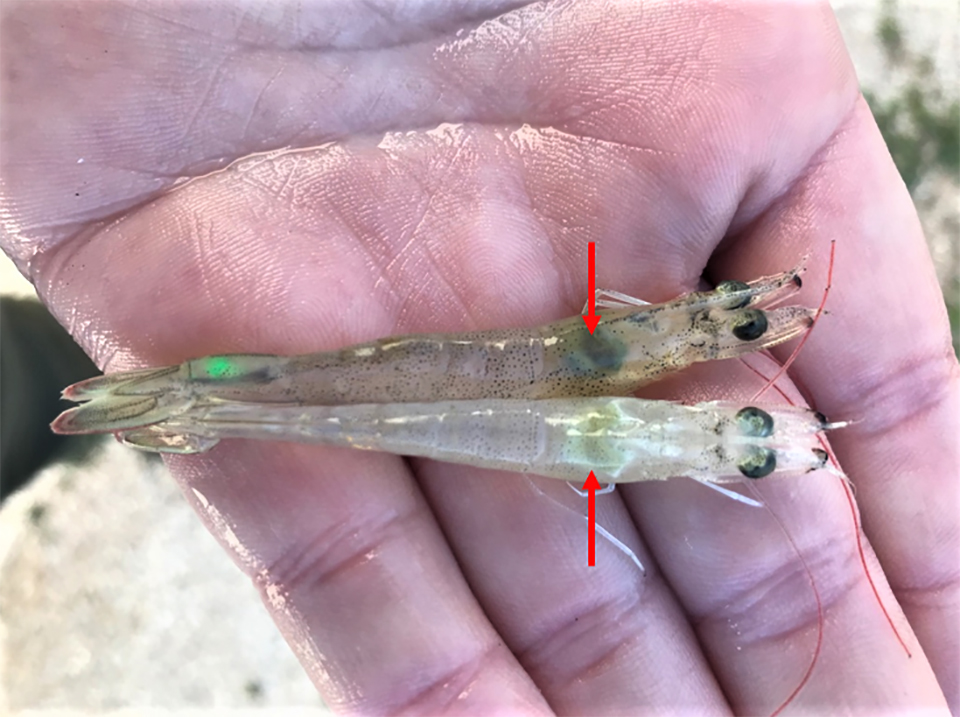
Health & Welfare
AHPND is a chronic disease in Pacific white shrimp from Latin America
There is a new phase of infection for Acute Hepatopancreatic Necrosis Disease on Latin American shrimp farms, a contrast to observations in Southeast Asia.
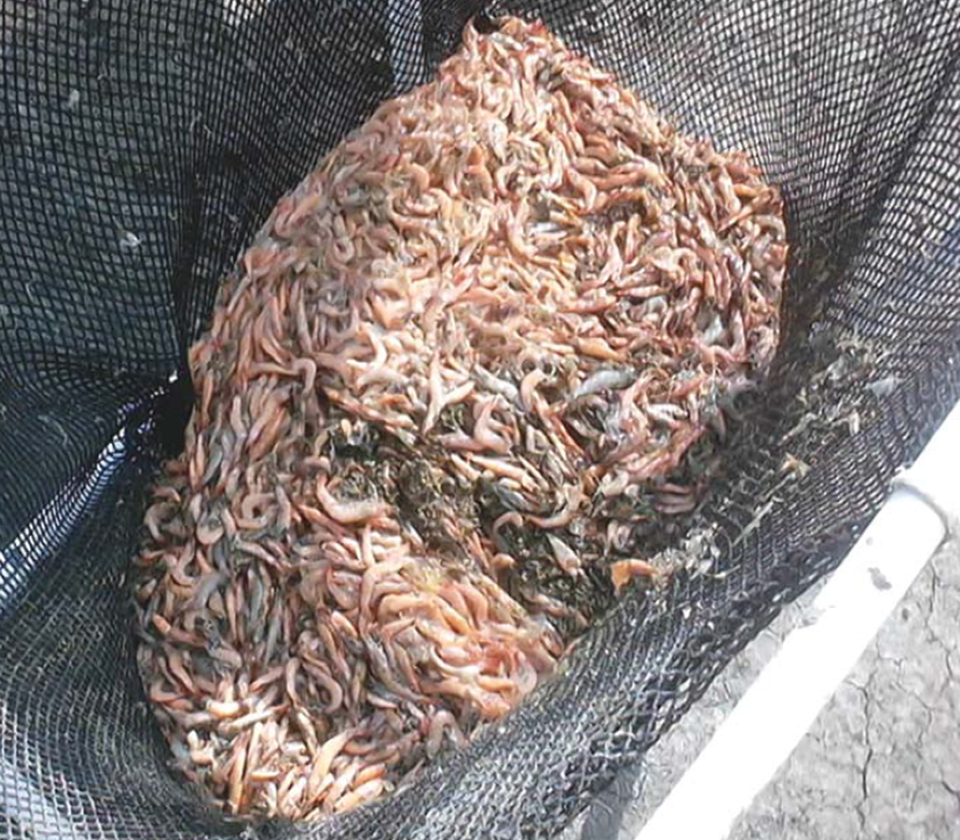
Health & Welfare
Dangers of viral pathogens in translocated shrimp, Part 1
Translocated shrimp have the potential to carry pathogens to new areas. Shrimp have a tendency to carry persistent infections without showing signs of disease.
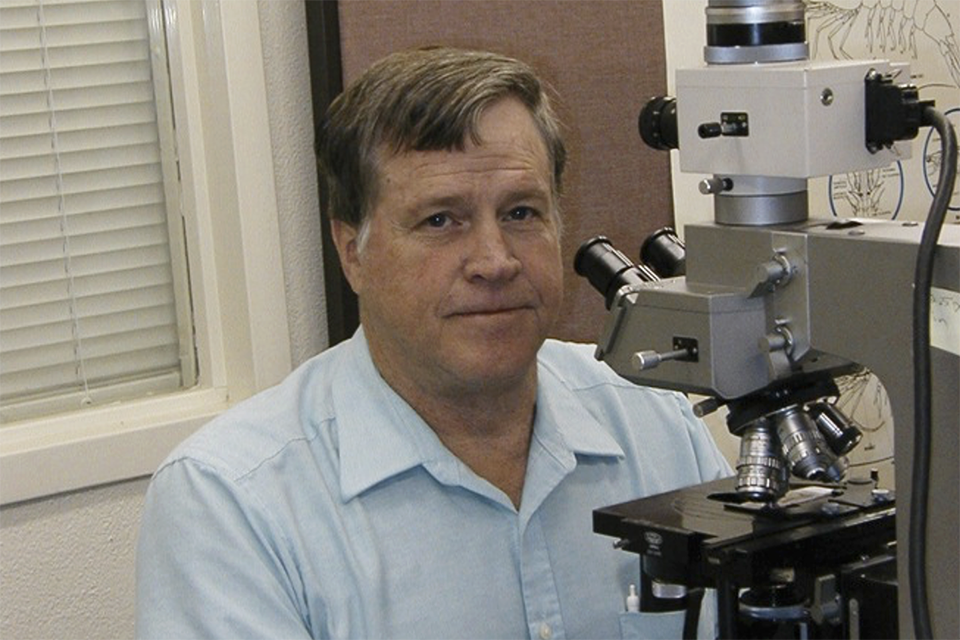
Intelligence
Donald Lightner, influential figure in shrimp aquaculture, remembered
Donald Lightner, pre-eminent shrimp pathology researcher and longtime head of the University of Arizona Aquaculture Pathology Laboratory, has died.
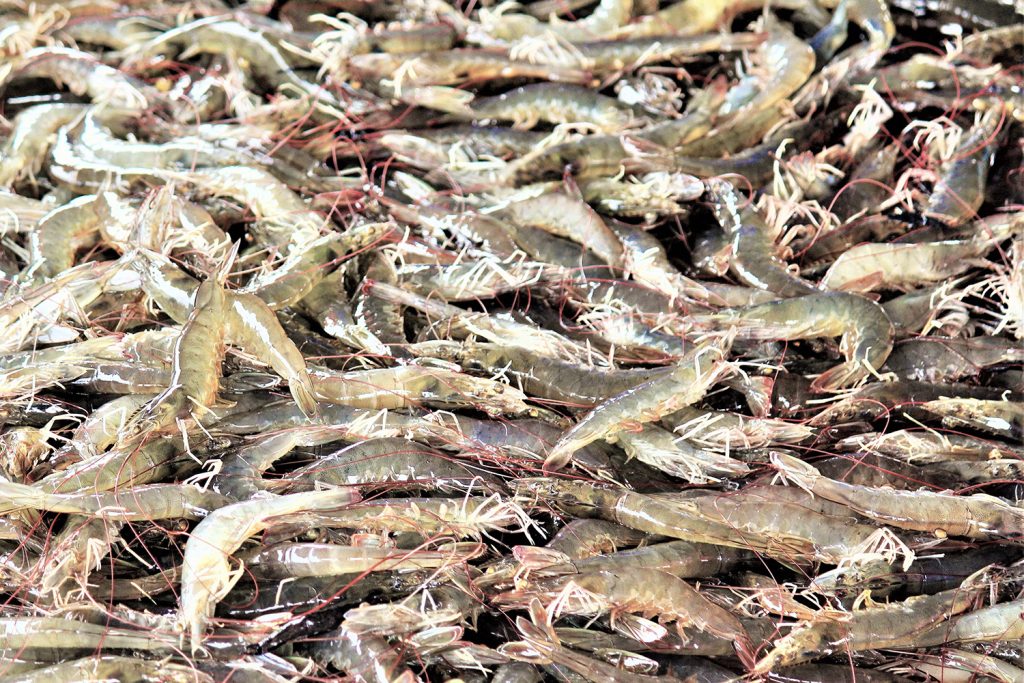
Health & Welfare
The OIE should delist IHHNV as a reportable farmed shrimp pathogen
The Infectious Hypodermal and Hematopoietic Necrosis Virus (IHHNV) is established in shrimp ponds in Ecuador. Current PCR protocols are insufficient.



